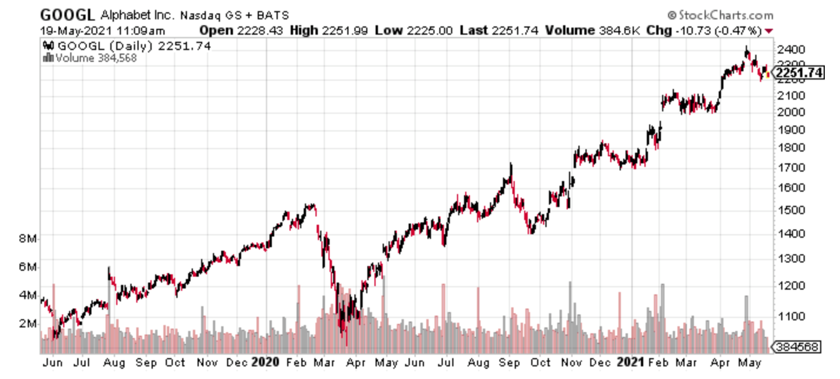Google Searches for the Path to Total Sustainability
In addition to launching products, modern CEOs must navigate the politics of corporate responsibility while attracting professional investors.
On Tuesday, Alphabet Inc. (Nasdaq: GOOGL) CEO Sundar Pichai stepped onto a makeshift stage at the Google campus. As the host of the I/O developer conference, he could have talked about code. Instead, Pichai talked sustainability in the most Google way possible.
Google doesn’t seem like a green business … the company’s bread and butter is a network of 21 resource-hungry data centers located all over the globe and linked by thousands of miles of fiber optic cable. These vast monoliths, filled with countless computer servers and switches, power billions of daily web searches, digital ads and cloud services.
A new facility in Arizona consumes 1 million gallons of water every day simply to keep all of the machines cool, according to a report last April from Time.
Related Post: Google Cashes Out Smaller Rivals With Slick New Payment App
Power consumption is a whole other story. A report published in February 2020 in Science magazine revealed that data centers use fully 1% of all of the world’s electric power. That’s a lot. But the good news is modern data centers are becoming far more efficient as internet-savvy companies find ingenious ways to shrink consumption.
Alphabet has gone one step further.
In 2007, the Mountain View, California-based company became the first major corporation to reach carbon neutrality. That’s a fancy way of saying the search giant offset all of its use of carbon-based power with renewable energy or credits. On Tuesday, Pichai said that by 2017, the largest and newest data centers at Google got 90% of their power from renewable sources. And he committed that by 2030, all facilities will run 24/7 on clean, renewable power.
It’s a big ask. Those centers are scattered all over the globe by design, and some locations do not get much sunlight. That puts the kibosh on solar, and others are near pockets of dense population, making wind farms impossible.
But given these constraints, Google is fighting back in a huge way.
Pichai noted that a new data center in Denmark got five new solar farms to augment existing wind-powered energy from the Danish grid.
So, Google is doing what it does best: Company engineers are building software systems to rejigger computer processing to run more efficiently and on schedules that make it easier to work around some of the limitations of clean energy.
It’s called the Carbon-Intelligent Computing Platform, and it’s an industry first.
The idea is to use artificial intelligence to shift processing within the entire Google network to places where renewable energy is most plentiful at the time.
This same Google know-how is making its new campus more sustainable. The roof will be constructed from Dragonscale solar skin, with 90,000 silver-solar panels capable of generating nearly 7 megawatts. The building will also feature the largest geothermal pile system in North America. It will heat the structure during the winter months while cooling it in the summer.
Related Post: Google Continues To Find Success
This will be an important experiment for Alphabet. The great competitive advantage large-tech companies hold is the ability to test really big ideas internally. Using software to shift power-hungry computer processing across the network geographically is a saleable service. Testing the process across thousands of Google workloads should help engineers iron out the wrinkles.
Yet, that is not the reason longer-term investors should consider buying Alphabet shares. The rationale is sustainability.
So-called environmental, social and corporate governance (ESG) investing is a $30 trillion market segment that is expected to reach $53 trillion by 2025. Investors are clearly seeking corporations that are conscious of the environment, socially active with causes and exercise responsible corporate governance. Alphabet is the leader in the segment, making it a must-own for institutional money managers.
Shares trade at only 19.2 times forward earnings and 1.5 times sales. These are extremely reasonable metrics given the scale of Pichai’s ambitions and the company’s place within the ESG ecosystem.
Savvy investors should strongly consider using any near-term weakness as a buying opportunity.
Best wishes,
Jon D. Markman




